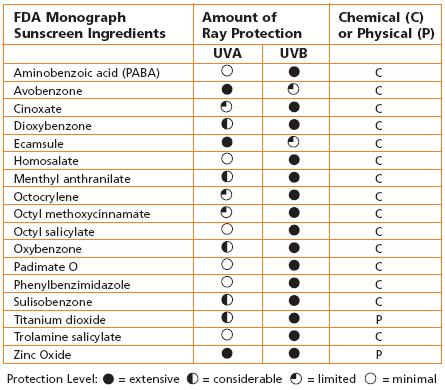Now, I am not sure but have you ever come across the term 'Sunblock'. Well, let me then tell you that this word doesn't hold good at all. The reason being FDA (US federal drug administration) has passed out some guidelines regarding the labeling of sunscreens in which it makes it clear that the term 'Sunblock' is misleading and can't be used anymore. Now, if you guys remember, I had done a very old post, my first post on sunscreens in which I had explained two types of sunscreen - chemical and physical sunscreens. So, yup, that's the only classification which holds.
- applied half hour before going out
- absorbs the sun rays to prevent damage to the skin
- has to be as close to skin as possible for maximum protection
- has to be reapplied to ensure effectiveness
- has to be applied immediately before going into sun
- the ingredients deflect sunlight from the skin instead of absorbing
- should be the top most layer of products applied so as to deflect the rays
- has to be reapplied only if one is perspiring or during swimming or when it is raining or in any case where there is a likelihood of the product being washed away
Now, we come on to the ingredients of the sunscreens. Do check this link for extra information on more ingredients which are not FDA approved.
 | |
| Approved Sunscreen Ingredients Chart from September 2006 given out by FDA |
So, if you are buying sunscreen, make sure your sunscreen has any or some of these ingredients listed above. Generally you will find avobezone and oxybenzone are most used in products like Lotus, Lakme and even in the dermatologist prescribed sunscreens. Now, from the chart, you can easily infer that though most of the ingredients provide adequate UVB protection, there are very few ones good at providing UVA protection.
What is Helioplex?
Helioplex is a patented technology of Neutrogena. As I mentioned above, avobenzone and oxybenzone are the most commonly used ingredients.
Avobenzone is a UVA blocker and Oxybenzone is UVB blocker but both ingredients are highly unstable, especially Avobenzone which breaks down pretty quickly (within half hour) when exposed to sunlight. So, Helioplex is a stabilizing formula developed by Neutrogena which harnesses the potent characteristics of Avobenzone and Oxybenzone to provide a broad-spectrum sunscreen which is stable.
What is Mexoryl?
Have you come across this term? Well, it was all in rage till very recently as the new 'sunscreen'. So, referring back to the chart, check out the ingredient called 'Ecamsule'. This ingredient is marketed by the name of 'Mexoryl' and the very reason it might have become very popular would be attributed to its characteristic of being a very good filter of UVA but unfortunately, it doesn't give the broad-spectrum protection. This is a patent of Loreal. Check out this post by Sesame on better comparison of Helioplex and Mexoryl.
P vs C
Now I come to the most important part of the post. Referring back to the chart, you would find the fourth column very interesting. Most of the ingredients are chemical and only two are physical ingredients - Zinc Oxide and Titanium Dioxide. Now, what makes physical ingredients different from chemical ingredients?
- Chemical Ingredients absorb the UV rays, as I mentioned above. So, where do this absorbed energy go? Inside our bodies. And, they becomes manifested as something which you would be familiar with 'free radicals'. Yup, the very thing which makes us age.
Physical Ingredients just sit on the skin and deflect the sun's rays.
- Chemical Ingredients are highly unstable and breakdown in the sun very easily. That is why one is supposed to apply the sunscreen frequently.
Physical Ingredients do not break down in sunlight and need not be reapplied frequently as frequently as the chemical sunscreens.
- Chemical Ingredients do not leave any white cast on the skin.
Physical Ingredients do. A disadvantage.
No comments:
Post a Comment